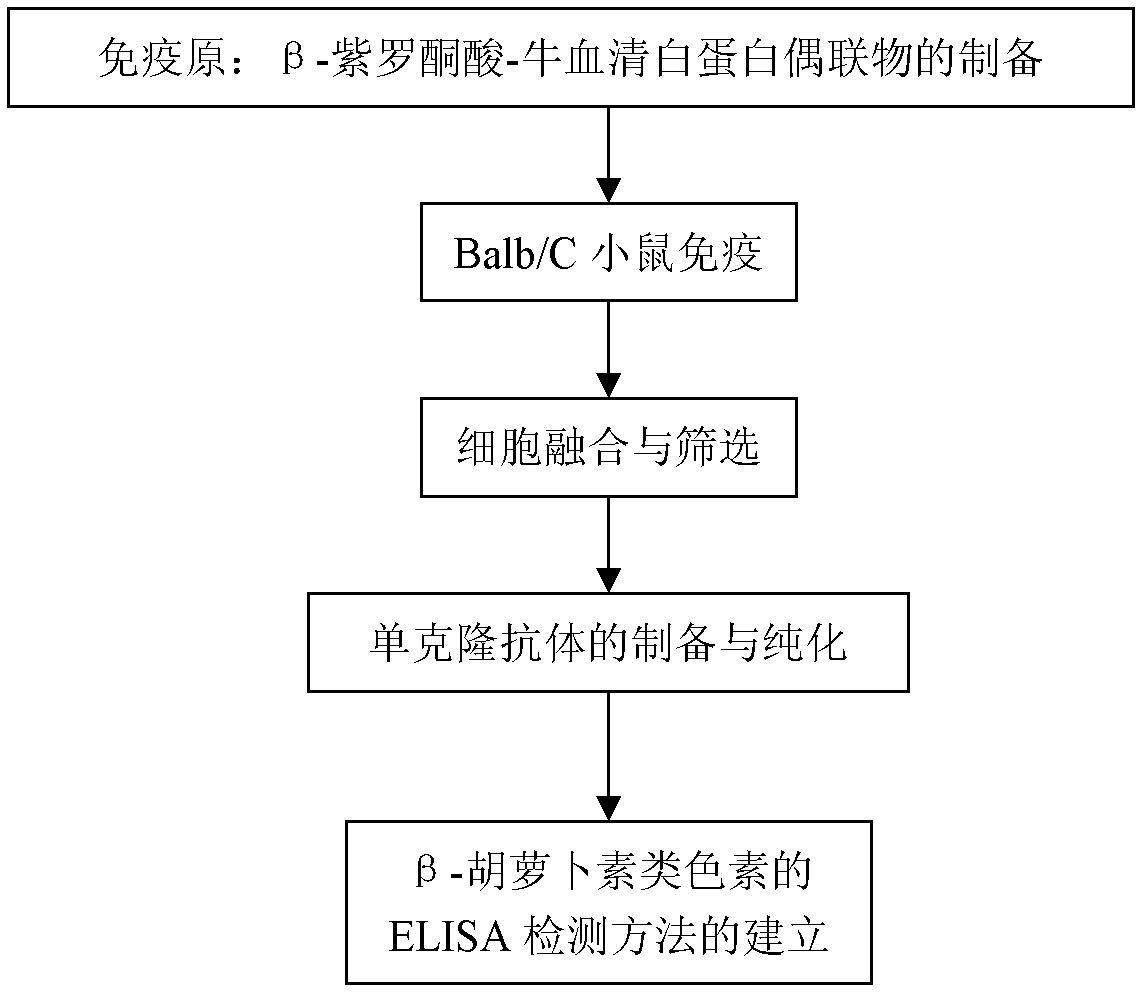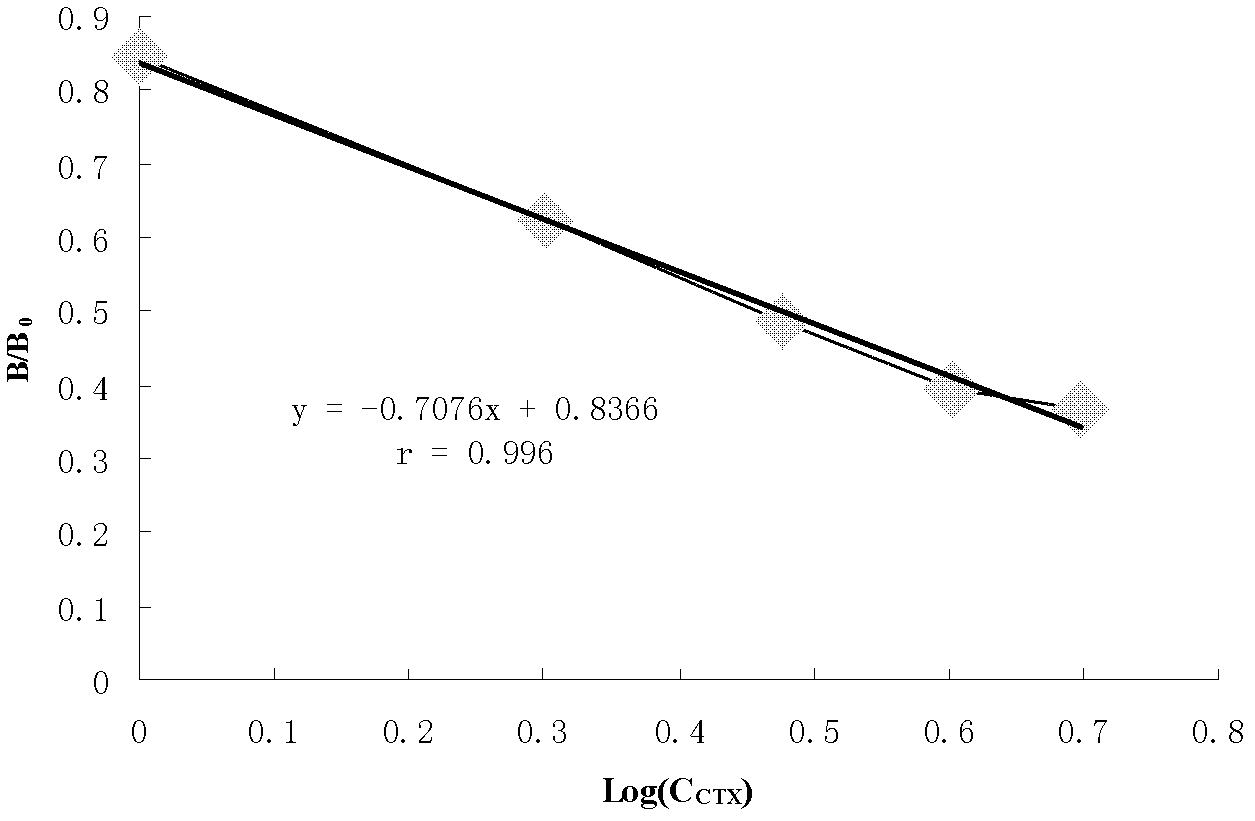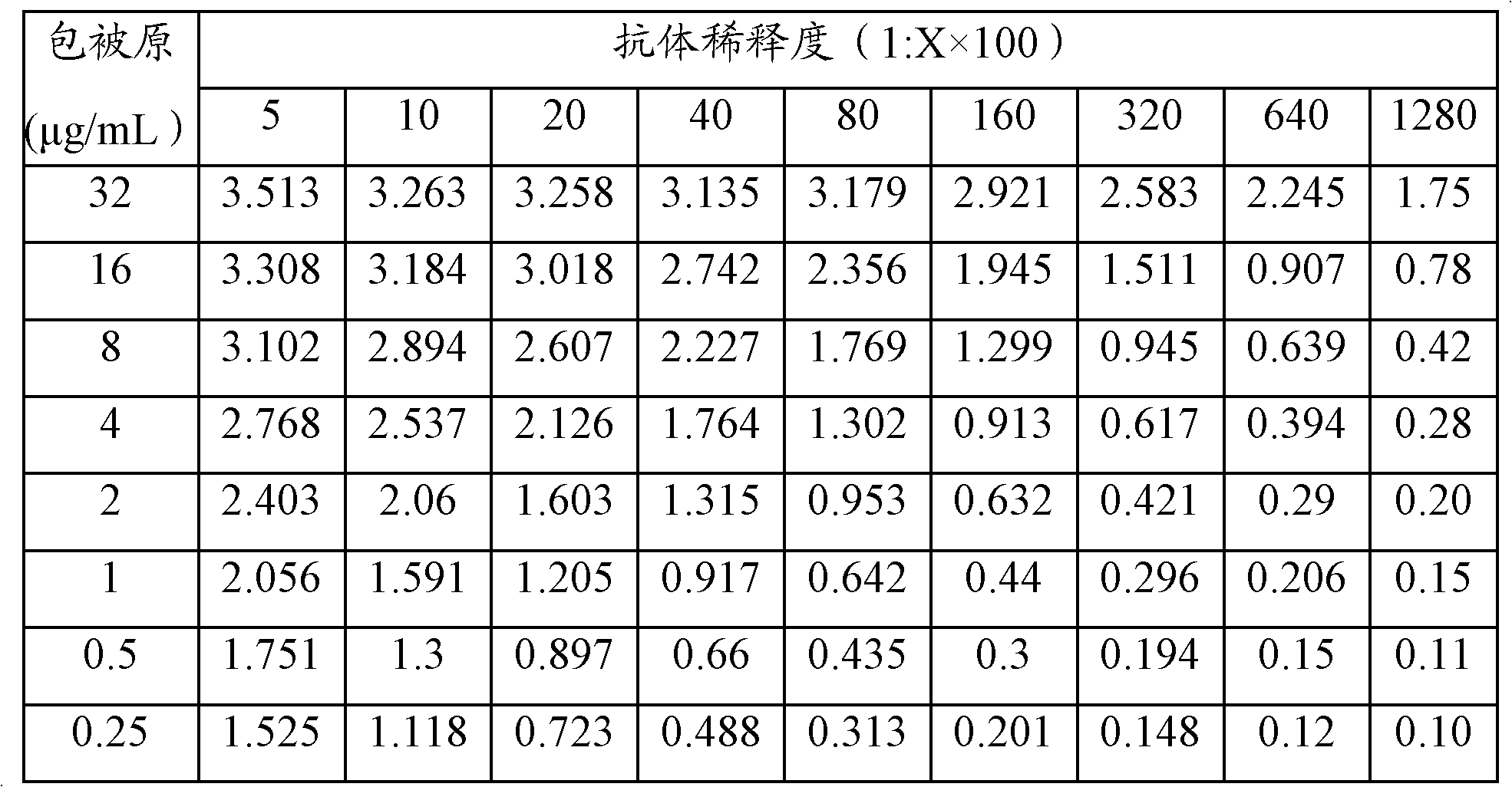Monoclonal antibody, enzyme-linked immunosorbent assay (ELISA) method and kit for detecting beta-carotene pigments
A technology of enzyme-linked immunosorbent reagents and monoclonal antibodies, which is applied in the direction of microorganism-based methods, immunoglobulins, chemical instruments and methods, etc., to achieve the effects of reducing detection costs, strong specificity, and high detection sensitivity
- Summary
- Abstract
- Description
- Claims
- Application Information
AI Technical Summary
Problems solved by technology
Method used
Image
Examples
Embodiment 1
[0035] Example 1 Preparation of Immunogen and Coating Original
[0036] 1.1 Synthesis of β-ionone acid
[0037] Accurately measure 30 mL of distilled water and add it to a pre-cooled round bottom flask; add 20 g of liquid bromine to the flask, stir for 2 hours, and form A liquid for later use. Accurately 6g of β-ionone was dissolved in 20mL of dioxane to form B liquid. Add solution B to solution A, and react at room temperature for 8 hours. After the reaction was completed, 20% sodium bisulfite was added until the starch potassium iodide test paper no longer turned blue. Concentrated hydrochloric acid was then added until a white solid appeared in solution. After filtering, put the white solid substance of the filter residue into methanol, put it in a 60°C water bath and stir until completely dissolved, then filter. The filtrate was placed at -20°C overnight and filtered, and the filter cake was dried in a vacuum oven at 50°C, and the obtained product was identified as β-i...
Embodiment 2
[0046] Example 2 Preparation of Monoclonal Antibody
[0047] Preparation of hybridoma cells: refer to the method in Xue Qingshan's "Principles and Techniques of In Vitro Culture" (Science Press, 2001 edition): immunize Balb / C mice with the conjugate β-iononic acid-BSA prepared in Example 1 (purchased from the Experimental Animal Center of Hubei Provincial Center for Disease Control and Prevention). The immunization procedure was to emulsify a protein solution containing 125 μg of the conjugate β-iononic acid-BSA with an equal volume of Freund's complete adjuvant (purchased from sigma), and then inject it subcutaneously at multiple points on the back of the mouse. Afterwards, it was strengthened every 2 weeks, and emulsified with incomplete adjuvant (purchased from sigma company). Finally, 3 days before the fusion (preferably more than 4 weeks from the last immunization), intraperitoneal injection, booster immunization, double the amount of antigen, without adjuvant.
[0048]...
Embodiment 3
[0050] The establishment of embodiment 3 ELISA detection method
[0051] 3.1 Preparation of reagents (unless otherwise specified, the reagents used in this example were prepared by the following methods)
[0052] Phosphate buffer: NaCl 8.0g, KH 2 PO 4 0.2g, Na 2 HPO 4 12H 2 O 2.9g, KCl 0.2g, add ultrapure water to 1000mL, adjust pH to 7.4;
[0053] Coating solution: Take Na 2 CO 3 1.5g, NaHCO 3 2.9g, add triple distilled water to 1000mL, adjust the pH value to 9.6;
[0054] Washing liquid: NaCl 8.0g, KH 2 PO 4 0.2g, Na 2 HPO 4 12H 2 O 2.9g, KCl 0.2g, Tween 200.5mL, add ultrapure water to 1000mL, adjust pH to 7.4;
[0055] Blocking solution: Ovalbumin 0.1g dissolved in 100mL phosphate buffer;
[0056] Substrate solution: provided by Wuhan Feiyuan Technology Co., Ltd.
[0057] Stop solution: 2mol / L sulfuric acid solution.
[0058] 3.2 Preliminary determination of coating source concentration and antibody working concentration
[0059] The combination of wor...
PUM
 Login to View More
Login to View More Abstract
Description
Claims
Application Information
 Login to View More
Login to View More - R&D
- Intellectual Property
- Life Sciences
- Materials
- Tech Scout
- Unparalleled Data Quality
- Higher Quality Content
- 60% Fewer Hallucinations
Browse by: Latest US Patents, China's latest patents, Technical Efficacy Thesaurus, Application Domain, Technology Topic, Popular Technical Reports.
© 2025 PatSnap. All rights reserved.Legal|Privacy policy|Modern Slavery Act Transparency Statement|Sitemap|About US| Contact US: help@patsnap.com



